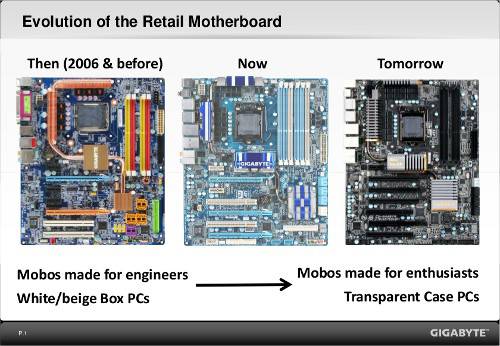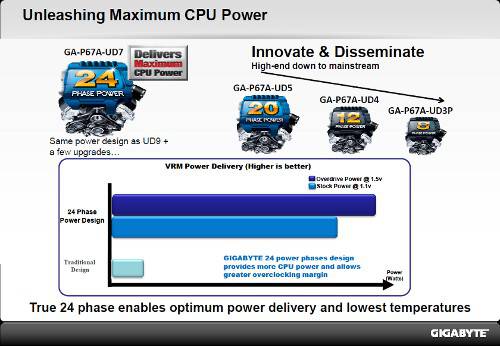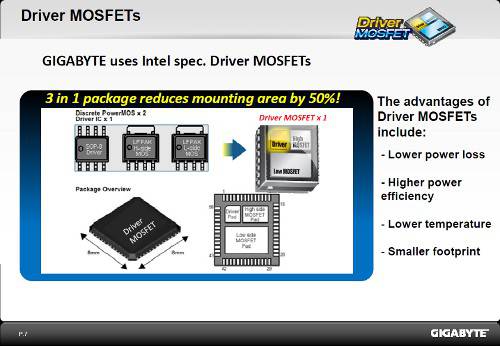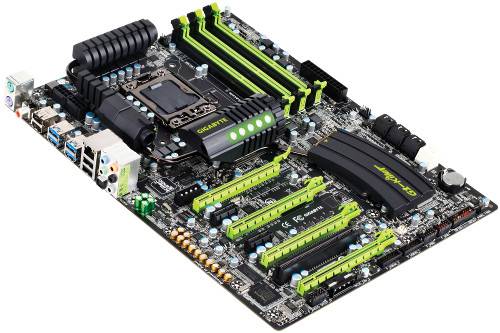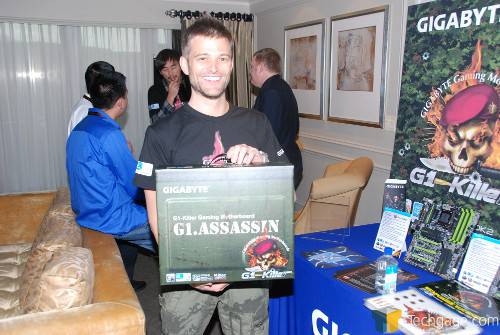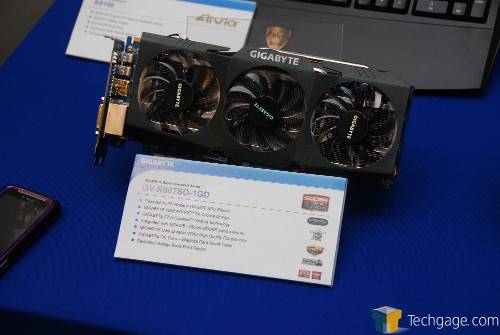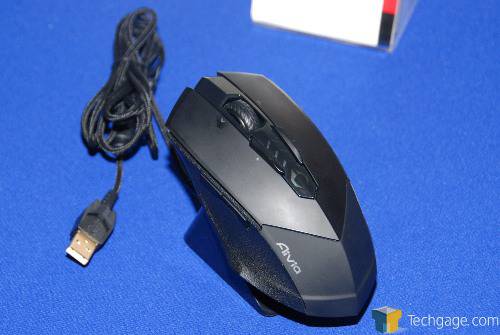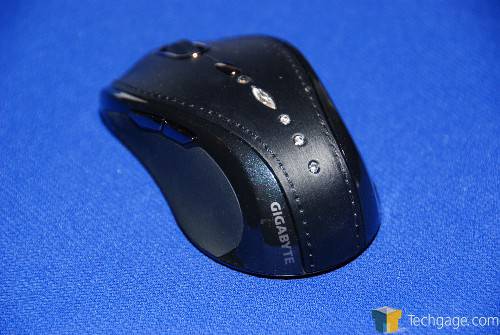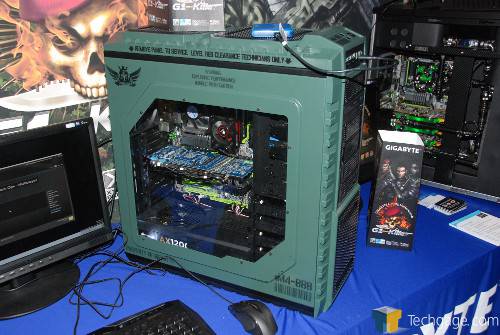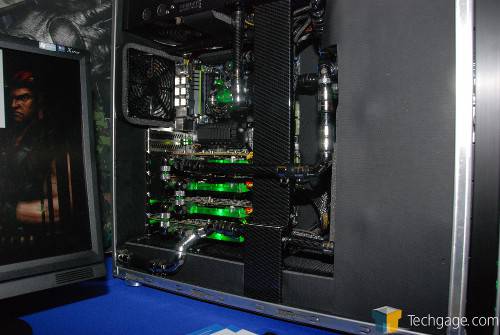- Qualcomm Launches Snapdragon 4 Gen 2 Mobile Platform
- AMD Launches Ryzen PRO 7000 Series Mobile & Desktop Platform
- Intel Launches Sleek Single-Slot Arc Pro A60 Workstation Graphics Card
- NVIDIA Announces Latest Ada Lovelace Additions: GeForce RTX 4060 Ti & RTX 4060
- Maxon Redshift With AMD Radeon GPU Rendering Support Now Available
GIGABYTE at CES 2011
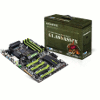
GIGABYTE had lots to show off during CES, including its new G1 motherboard line-up, complete with onboard X-Fi audio and Killer E2100 networking… and also a bullet. In addition, the company talked about some of its overclocking-related motherboard technologies, along with its upcoming gaming peripherals and graphics cards.
During GIGABYTE’s press conference at CES 2011, the company had a major focus on its motherboards and talked about how things have changed over the past couple of years, while also discussing its upcoming enthusiast offerings. Due to a tight schedule, we were unable to attend this press conference, but we were still able to get the important details after-the-fact.
It’s a secret to no one that GIGABYTE has in the past produced some of the most colorful motherboards on the planet, and depending on personal taste, it was something that was either appreciated or hated. It seems that most people were weighted more toward the latter, as GIGABYTE has since decided to tone things down.
The last couple of GIGABYTE launches have featured boards with a blue PCB and blue components, and overall, they’ve looked quite nice. But, it’s hard to compete with a black PCB and darker-colored components, and the company proves that it agrees with the help of its higher-end P67 line-up.
I prefer darker-colored boards, so I think GIGABYTE has done a great job with its P67 series, and as I’ve mentioned in other content, I’d be willing to say that its P67A-UD7 is the best-looking board ever released.
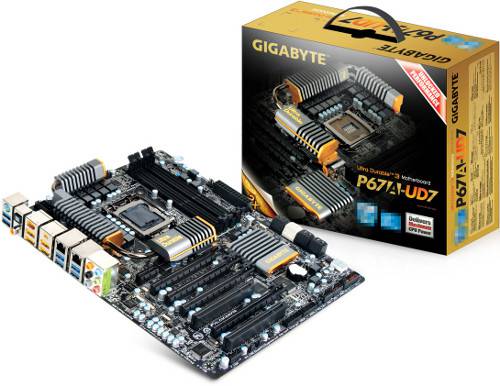
Am I wrong?
Going forward, GIGABYTE will continue to use the blue/blue color scheme, but it will be dedicated to the lesser-expensive product-lines, such as UD3, UD2H and so forth. The higher-end boards will be the ones that see the black/dark-color schemes, or “matte black” as GIGABYTE calls it. Those models include the UD3R/P straight up through to the UD9.
Aesthetics aside, the company decided to talk a bit about its power configurations on its higher-end motherboards – schemes that help make the boards more attractive to overclockers. Kicking things off, it quoted The Overclocker online magazine, which stated that GIGABYTE’s CPU VRM configuration is the best for overclocking, from both an efficiency and stability standpoint.
I’m not a hardcore overclocker, but I still think that 24 power phases on a board is overkill. GIGABYTE disagrees, though, because it continues to employ such configurations and stresses that they increase the efficiency to a major degree over “traditional” designs (I am not sure what the company considers to be traditional).
Helping efficiency further, GIGABYTE is utilizing a better VRD12 design by using an “Intel Approved” Intersil PWM controller, which uses the SVID technique of regulating voltage to the CPU. Adding to the “Intel Approved” fray, GIGABYTE is also using “Driver MOSFETs” which is in essence an additional chip added to each MOSFET that improves power efficiency – lowering the power leakage and also the temperature.
GIGABYTE also talked about “Dual CPU Power”, which it claims doubles the VRM phase lifespan and improves energy savings. Since all of the additional phases that the high-end boards offer is primarily only useful to overclockers, more phases are triggered when things start getting heavy. A regular overclock might only require 12 phases, but after cranking things way up, all 24 phases could be used.
Of course, we can’t forget the “Dual BIOS”, a feature that GIGABYTE has really been the only one to heavily use and promote over the year. Should one BIOS fail, the backup can save the day. Simple, but effective and potentially night-saving.
Prior to CES, GIGABYTE teased about its “G1” motherboard line-up, and of course, these boards were shown off during the event. In essence, G1 boards are designed for gamers, those who want a full-featured offering and plan to use dual or even triple GPU solutions. Three variants were unveiled, the Assassin (highest-end), Sniper (high-end) and Guerrilla (mainstream).
Here’s GIGABYTE’s Colin Brix holding the larger-than-usual motherboard box:
I’m not going to exhaust all of the details of these boards for this article, but we do hope to receive a sample of one in the near-future and we can go into more details. What makes the G1 series so interesting is that all of them utilize Killer Networks’ E2100 network card, or “network processing unit”. This has a dedicated 1GB of DDR2 memory to help offload network traffic from the CPU, and is meant to provide the best possible networking solution for gamers.
With the NIC taken care of, the audio is all that’s left. To fill that void, GIGABYTE has contracted Creative to use its X-Fi chip on-board as well. This is a real X-Fi solution, not an emulated solution that has been used on many motherboards in the past. You can see the audio card’s full circuitry on the left side of the board, along with its chips.
The lowest-end G1 offering is the only one to forego the real X-Fi solution in lieu of a software-based one (similar to other boards we’ve seen in the past).
One of the more interesting aspects of the G1 boards is the faux bullet cartridge with bullet on top. I had asked GIGABYTE if it had considered having the bullet fire off if someone gets too carried away with their overclocking, but sadly, I was reminded of potential legal issues.
Moving away from motherboards, GIGABYTE had some other things to talk about when I visited its suite at the Venetian hotel. The first is the Super Overclock versions of AMD’s Radeon HD 6800 series. These cards feature a WINDFORCE cooler that looks to be extremely effective (we will find this out in the weeks to come when our sample arrives). It allows a ton of airflow, has a good design, and takes up two slots in total. You can see a side-view of the card here.
A couple of months ago, we took a look at GIGABYTE’s first “Aivia” offering, a gaming keyboard. Overall, our thoughts of it were quite good, and it even received our Editor’s Choice award. At the suite, it showed off an upcoming wireless gaming mouse, replete with removable cable. This mouse will be similar to the GM-M8000 in that it’s catered toward gamers, but GIGABYTE states that it will be the first wireless solution that’s truly reliable enough for gamers to want to use it.
Remember that Swarovski luxury mouse we saw from GIGABYTE at Computex two years ago? Well, now it comes in black leather, not only brown. And that’s really all there is to say about that!
Before wrapping up, I have to post a couple of PCs that were used in the suite, because they look excellent:
GIGABYTE had a lot to show off during CES, and its G1 motherboard has intrigued me quite a bit. I look forward to receiving a sample to give it a good test, and give both the on-board Creative X-Fi card and Killer NIC card an honest go. Stay tuned for a review!
Discuss this article in our forums!
Have a comment you wish to make on this article? Recommendations? Criticism? Feel free to head over to our related thread and put your words to our virtual paper! There is no requirement to register in order to respond to these threads, but it sure doesn’t hurt!
Support our efforts! With ad revenue at an all-time low for written websites, we're relying more than ever on reader support to help us continue putting so much effort into this type of content. You can support us by becoming a Patron, or by using our Amazon shopping affiliate links listed through our articles. Thanks for your support!




